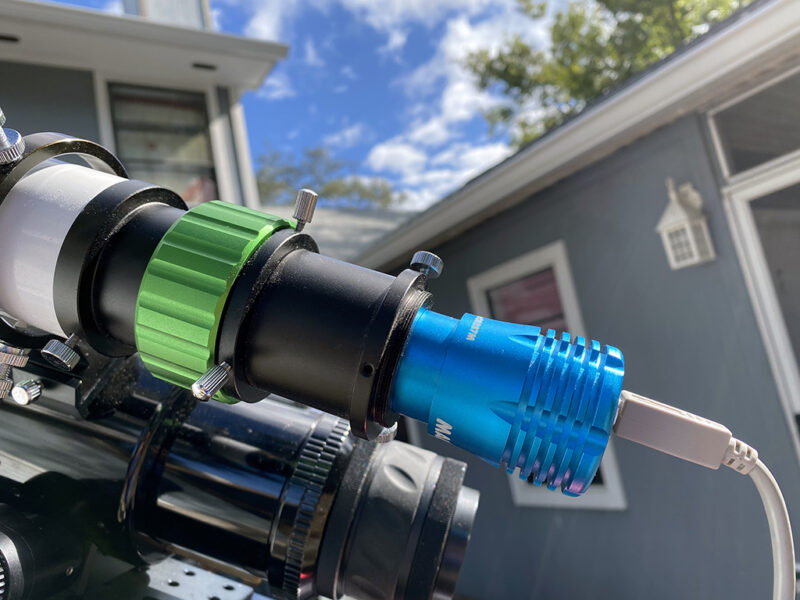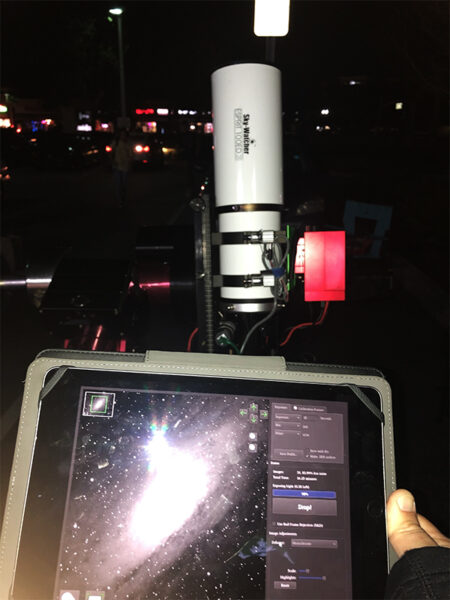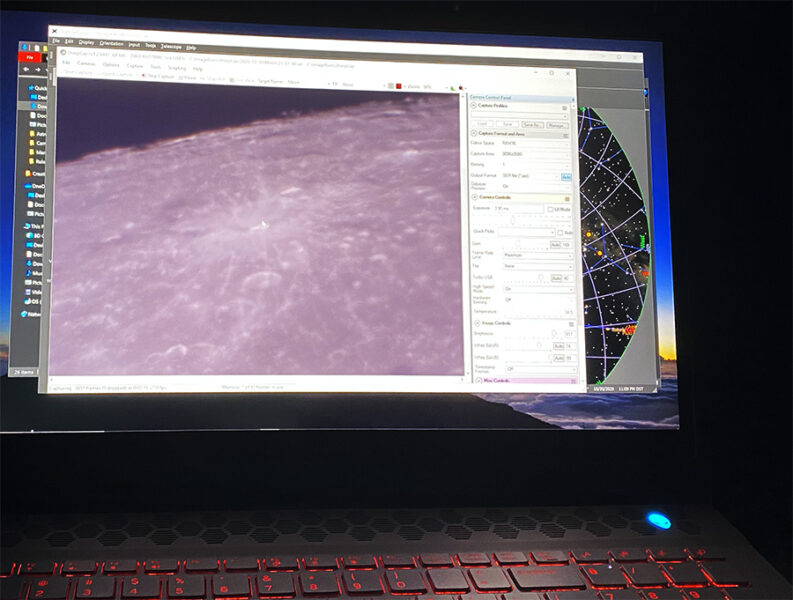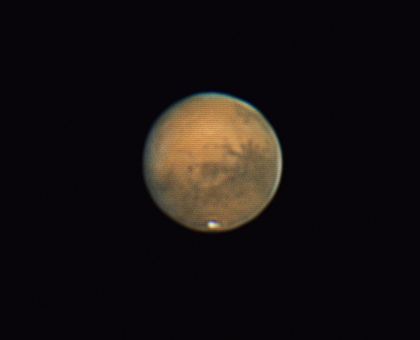Today’s high speed cameras are more affordable and more capable than ever. Here’s a few tips on what to look for, and what you can do with them.
There is no such thing anymore as a video camera.
Video is now just a medium or a capture format, if you will; it's an application of camera hardware. Just as most any camera can capture still images, most any camera can also be used to assemble a collection of still images into a video file, either during or after image acquisition. The only real difference is between high-speed cameras and cameras that aren’t fast enough live viewing.

Richard S. Wright Jr.
The good news is that, even as the Sun sets on the notion of video cameras, the Sun is also rising on a new age where high-speed digital cameras suitable for astrophotography are getting more affordable and more capable by the month. High-speed imaging cameras are plentiful these days, thanks in part to the security and smartphone industries that are driving this technology forward. Typically though, what we look for in a camera depends on how we are going to use it. When it comes to astronomy, there are two main applications for high-speed cameras: video observing and lucky imaging.

Richard S. Wright Jr.
Video Observing
Electronically Assisted Astronomy (EAA), or video observing, is simply watching the image that comes through a telescope with a camera attached as it live-streams to a monitor or computer.
Mallincam pioneered this market, selling kits consisting of cameras paired with video monitors. Today, there are many competing options, though Mallincam is still alive and well. They're even expanding their offerings to include cameras with USB 3.0 connections that feed directly into a laptop for live viewing.
A camera is 10 times more sensitive than the human eye and it provides a live view through the telescope that can be a spectacular experience — and great for outreach events! Slightly longer exposures or computer-assisted stacking of the last several images from the data stream often reveal color and details you wouldn’t be able to see through the eyepiece. Unlike with long-exposure, deep-sky imaging, user-adjustable gain, white balance, and levels adjustments serve as real-time alternatives to more sophisticated image-processing after the fact.
The best cameras for EAA purposes are those with a relatively small array of large and sensitive pixels, producing an image suitable for a monitor or TV screen. Big pixels are much more sensitive to light than smaller pixels, and have a noise advantage as well. My favorite camera for this purpose has 9-micron pixels, which is quite large in comparison to what most amateurs would use for planetary imaging or even deep-sky work.
Lucky Imaging
Solar system objects — be it the Sun, the Moon, or one of the major planets — tend to be very bright in comparison to deep-sky targets, which makes them good targets for lucky imaging. By taking thousands of very short exposures, we can then choose to stack only the sharpest frames, recorded when the atmosphere was momentarily still. The final resolution is simply not possible with longer-exposure images, as low as 1/10th of an arcsecond per pixel — that's 10 times better than most deep-sky photos under even the best of conditions.

Richard S. Wright Jr.
Cameras marketed for this purpose have tiny pixels, typically around 3 microns or smaller. Larger pixels can also work quite well at long focal lengths, but smaller pixels are generally preferred in order to obtain the highest resolution your optics can provide.
High frame rates are also essential to capture as many individual exposures in as little time as possible, because solar system targets change appearance even over short amounts of time. The planets are all rotating, shadows change on the Moon, and sunspots change shape, too.

Richard S. Wright, Jr.
Bear in mind though, that super-short exposures also collect very little light, so you will be limited by how much light your telescope can collect. For example, while your high-speed camera may be able to capture 200 frames per second, a 1/200th-second exposure may not be nearly bright enough to properly expose your target. Tweaking the camera gain setting to brighten an image is something I tell deep-sky imagers never to do. But for lucky imaging of bright objects, you can get away with boosting the camera gain in order to achieve the signal you need in as short an exposure as possible.
Boosting gain sacrifices dynamic range, but the range of brightnesses from, say, the surface of Mars doesn't require full optimization of your camera's dynamic range. For this kind of application, we want a camera that is as sensitive as possible; that is, we want a camera with a high quantum-efficiency rating. Back-illuminated detectors with low read noise are thus the premium stock for this technique.

Richard S. Wright Jr.
The great news is that the market is flooded with great options for anyone interested in using a high-speed camera for video observing or solar system imaging. Imaging goals always drive your camera selection, and for EAA and lucky imaging we can make tradeoffs that would normally be detrimental for long-exposure, deep-sky imaging.
 0
0









Comments
You must be logged in to post a comment.